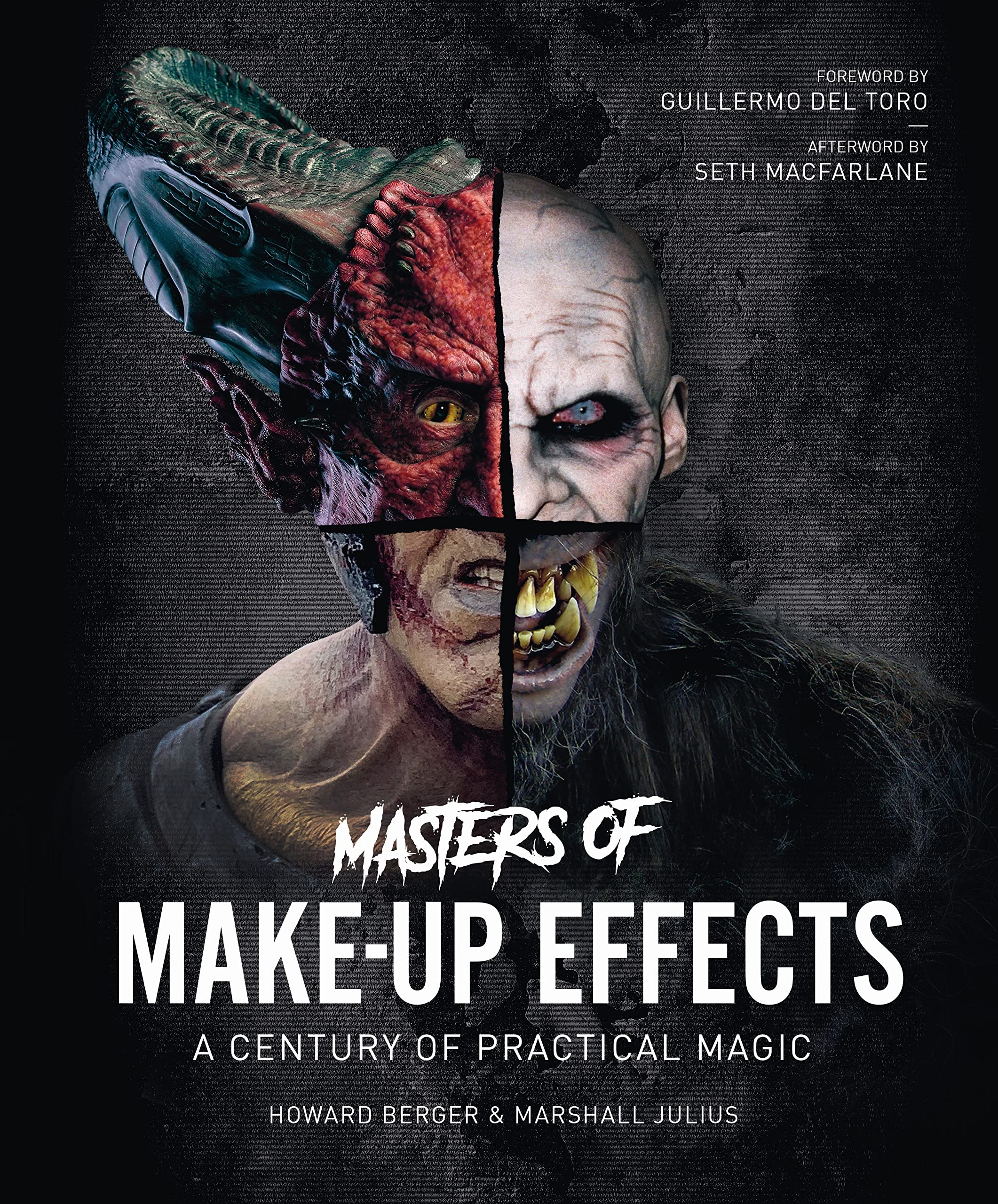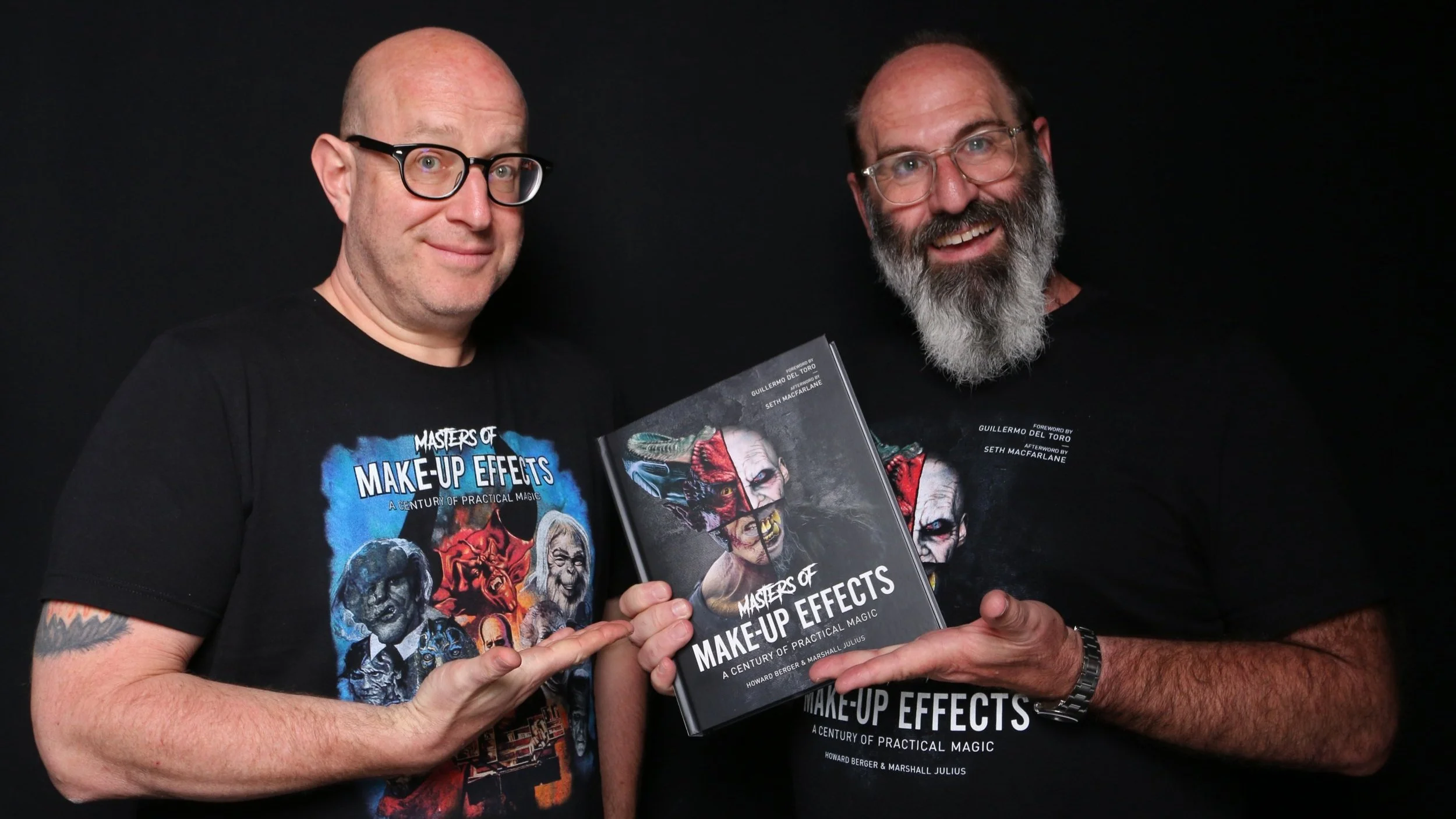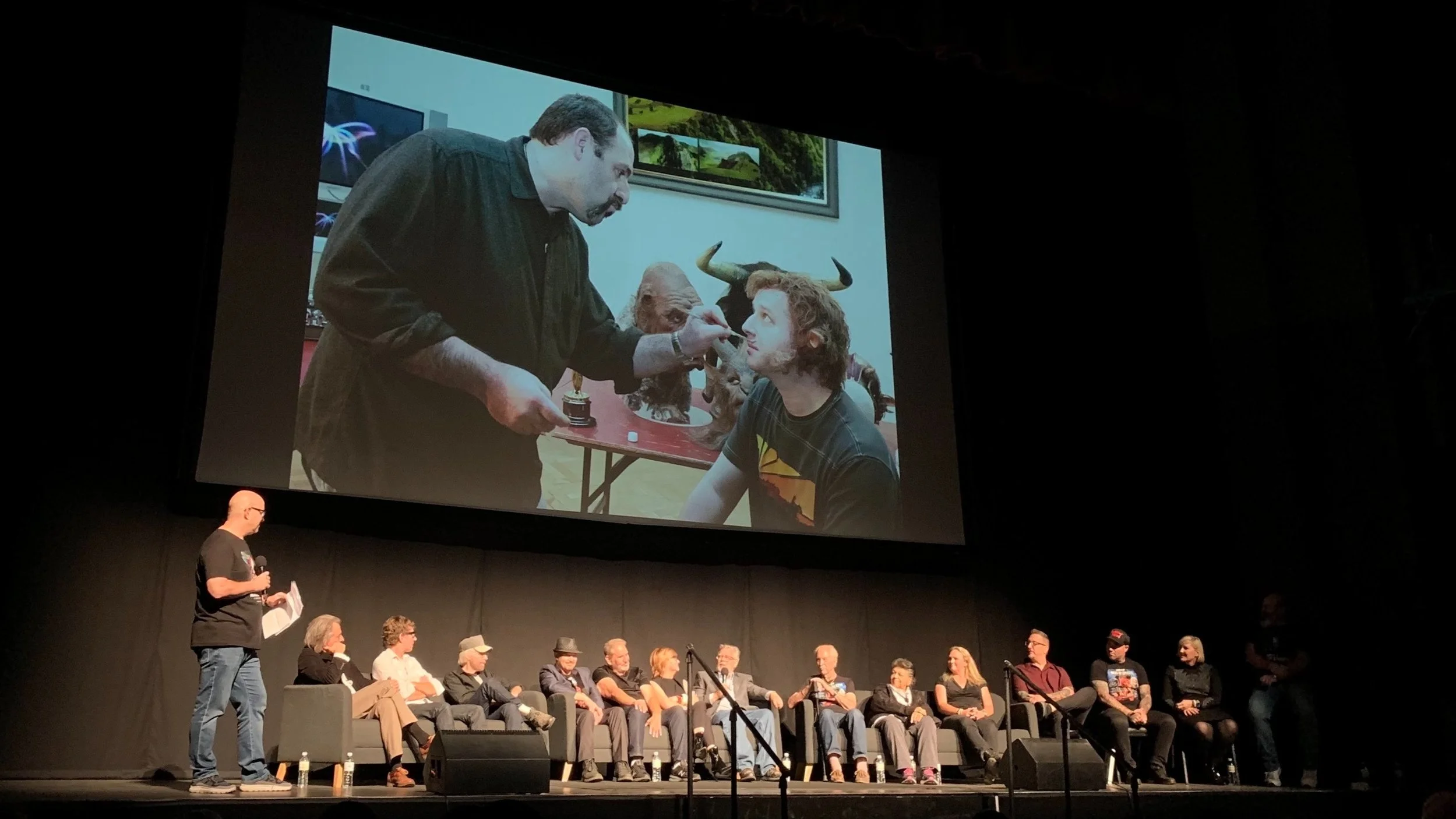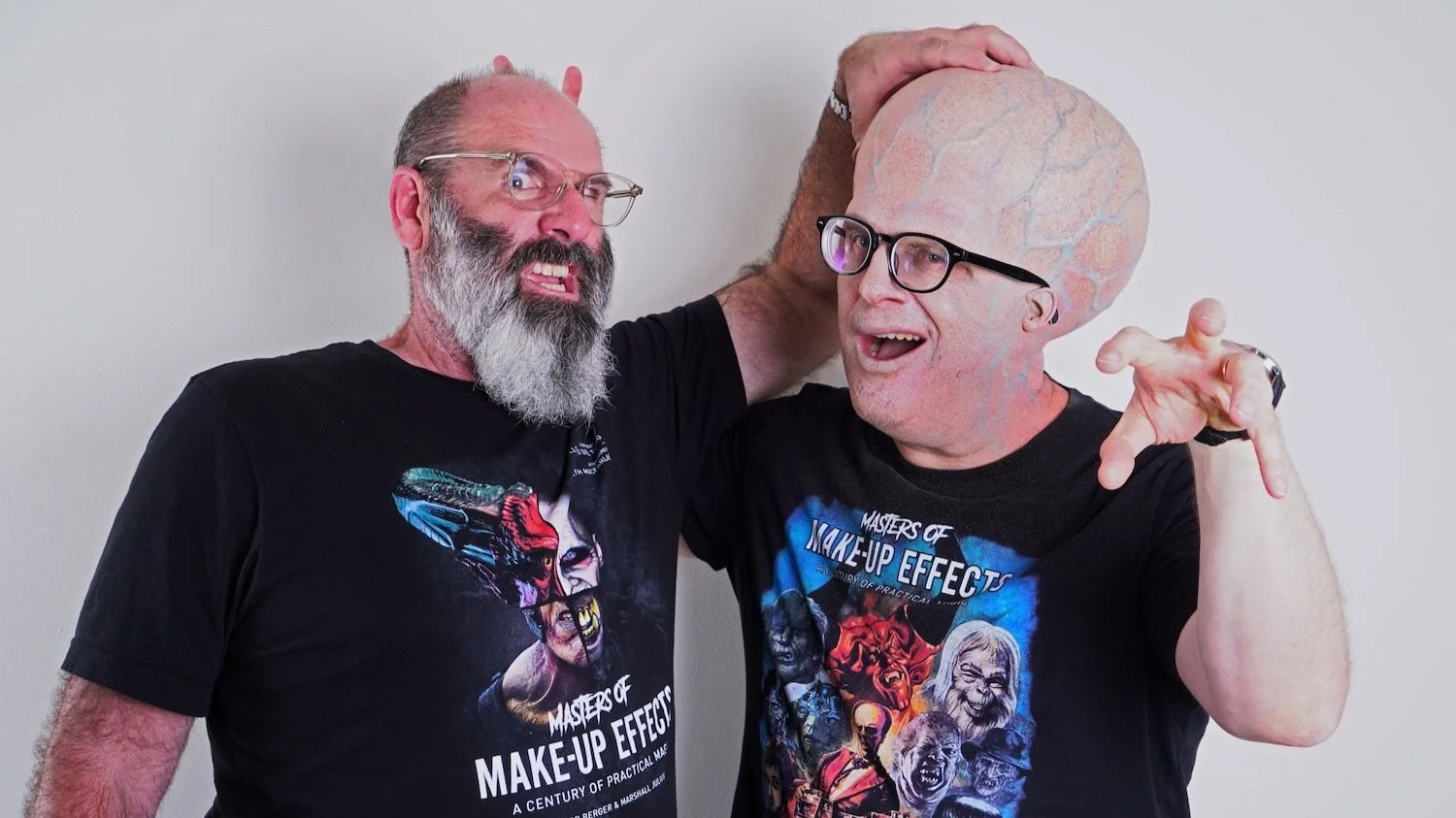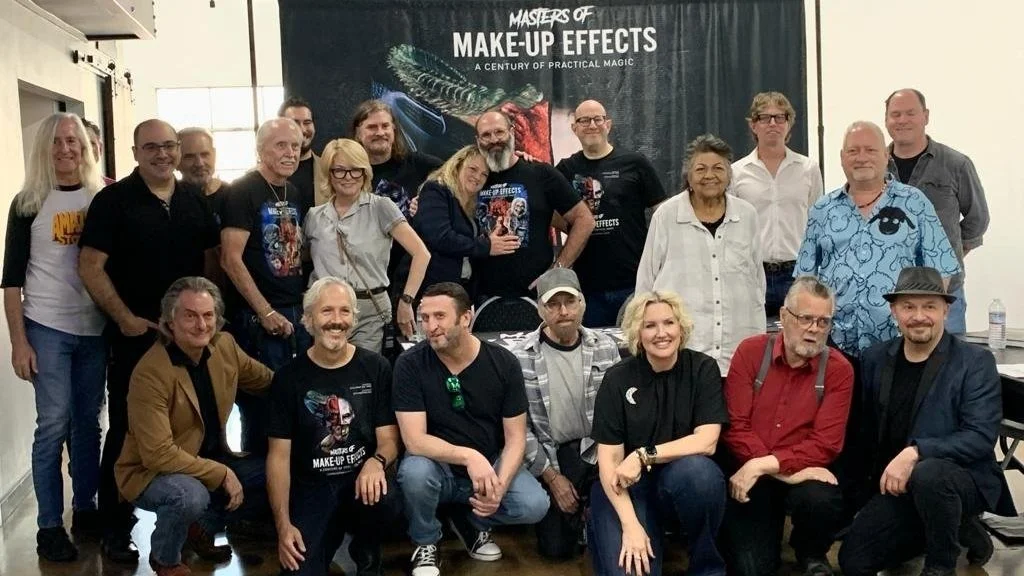Movie Make-Up Magic
By MICHAEL DARVELL
A new book, Masters of Make-Up Effects, looks at a century of practical magic in the cinema. The year 2022 marks the hundredth year from when the cinema first began creating its own special make-up effects. The first film to have such effects is thought to be F.W. Murnau's Nosferatu in 1922. Its combination of make-up, costume, shadow and the way the director filmed the astonishing performance by Max Schreck is, according to Montse Ribe, who worked on, amongst other films, Pan's Labyrinth, “a century old but still it preys on the mind.”
To mark the centenary of Murnau's iconic masterpiece, Howard Berger and Marshall Julius have produced a vast volume paying tribute to many of the masters of movie make-up effects over the past hundred years. Howard Berger is a special make-up effects artist with more than 800 feature film and television credits across four decades, taking in Dances with Wolves, Casino, From Dusk Till Dawn, The Green Mile, Kill Bill, Oz the Great and Powerful and The Amazing Spider-Man 2, among hundreds of others. He won both an Oscar and a Bafta for his work on The Chronicles of Narnia: The Lion, the Witch and the Wardrobe, and was nominated for an Academy Award for his work on Sacha Gervasi’s Hitchcock biopic. He was a co-founder of the KNB EFX Group which has, for over thirty years, been the most prolific special effects make-up studio in Hollywood.
Marshall Julius, apart from being an erstwhile contributor to Film Review annual with his reviews and a feature on the comic book heroes that have become cinema superstars, is a self-styled “veteran nerd... a film critic, blogger, broadcaster, quizmaster and collector of colourful plastic things.” He has an abiding interest in comics, action movies, monsters, horror films and space fiction, although top of the list is his devotion to Star Wars. He is also the author of the Vintage Geek quiz book and Action! The Action Movie A-Z.
In 2006 Marshall was commissioned by the London Sunday Express to interview Howard Berger who had just won his Oscar for Narnia and was in the UK to promote the DVD. Marshall not only met the great make-up man himself but his interviewee also turned the journalist into Mr Tumnus from The Lion, the Witch and the Wardrobe. For a while, as you can see in the book, Marshall, with new hair and faun ears, was transformed into an older-looking version of the character played by James McAvoy in the film.
Marshall and Howard kept in touch from then on and in 2010 talked about creating a book in which Howard would interview all his friends in the cinema make-up business, letting them talk about their own adventures in the movies and in the process reveal the films and make-up artists they particularly admired. However, Howard wanted it to be a readable book that focused on all the fun they had had working in the cinema industry rather than a dry, instructional manual on how to create special effects through make-up. And it is true that the resulting book does emphasise all of the fun they had, because fun was Howard’s operative word from the very beginning.
The problem at the time, however, was that everybody was so busy working because special effects make-up is a very time-consuming occupation. So the project was put on hold, albeit never forgotten, as both authors were determined to see it in print. Then something happened and it is probably an awful thing to have to admit but, out of a global tragedy came the chance to work on the projected book. With the onset of the pandemic nobody was working, no films were being made and people were at home with nothing to do.
So that is when Howard and Marshall grabbed the opportunity and found time to collect and collate scores of interviews with the great and the good in the movie make-up business. The result is quite an astonishing achievement and, although they were dealing with some really hideous make-up jobs, the main thing that comes through the professionals’ contributions is as Howard wanted it to be, and that is how much they enjoyed making the films and recalling the highlights of their unusual but highly inventive careers.
Both Howard and Marshall were fans of the fantasy genres from childhood –the so-called Monster Kids – and it turns out that so many of the practitioners in creative make-up also had the same early experience of a fascination for monsters, giants, spaceships, horror, and all the rest of the magic that makes up the popular movie genres. The book is mainly comprised of quotations, talks, reminiscences and some longer interviews or recollections by the masters of make-up effects. What is a great added bonus is the collection of marvellous stills in colour and black-and-white from the personal archives of the interviewees, most of which have never before been published. Therefore a unique piece of cinematic history is contained within these pages.
Starting with Nosferatu in 1922 and followed by Lon Chaney in the silent version of The Phantom of the Opera (1925) the book continues through the likes of Universal Pictures’ productions of Boris Karloff as Frankenstein’s monster and Lon Chaney Jr in Wolf Man. It covers the gamut from the earliest days and comes right up to date with such recent productions as Harry Potter and Game of Thrones. The book’s fifteen sections cover the varied world of monsters, showing how the artists got into creative make-up, how the effects were achieved from their initial sketches through to the finished prosthetics, the inspiration behind creating mythical beasts, the part played by synthetic blood in vampire and zombie make-up, how actors’ faces are changed beyond recognition, and what constitute the ingredient tools of the trade.
There are a lot of names represented here, in fact over fifty creative artists plus some actors, directors and producers working in the fantasy field. The names that stand out and those who are most often saluted for their work include Dick Smith (a god) and Rick Baker (a demi-god), followed by Stuart Freeborn, Richard Taylor, Tom Savini, Stan Winston, Doug Jones and, of course, Howard Berger himself, among many more creators who are recognised artists of the highest order in their chosen occupation.
The book will tell you, for instance, what Stuart Freeborn and Rick Baker had to do for Star Wars, the way John Chambers solved the problem of making the animals so life-like in Planet of the Apes, how Kazu Hiro made Gary Oldman completely disappear behind his Winston Churchill make-up in Darkest Hour, how Jeremy Woodhead did the same for Steve Coogan and John C. Reilly in Stan and Ollie and transformed Renée Zellweger as Judy Garland in Judy, how Richard Taylor tackled the make-up for the Lord of the Rings trilogy, the lengths Nick Dudman had to go to because Robbie Coltrane needed to appear to be eight feet tall in the Harry Potter series, how Matt Lucas wore a naked fat-suit in Little Britain (but could not show any pubic hair), what the reason was that made Gene Hackman bow out of playing Lips Manlis in Dick Tracy, and how Howard Berger survived four months in a limestone mine in Beaver Falls, Pennsylvania, while working on Day of the Dead. All these and hundreds more insights into the practical magic of movie make-up effects are what make the book such a fascinating read.
There is a foreword by Guillermo Del Toro, director of Pan’s Labyrinth, The Shape of Water and Nightmare Alley, and an afterword by Seth Macfarlane, with whom Howard Berger worked on the TV series The Orville, plus selected filmographies of the contributing artists. In the end it all comes down to teamwork and it is good to know that CGI has not replaced the make-up artists because they all work hand in hand. Some effects can only be achieved with make-up, whereas other elements also need CGI, and the results can often be a mixture of both techniques. They all can and do feed off each other.
There was plenty of co-operation between Howard Berger and Marshall Julius and all the people they contacted by email, WhatsApp, Skype, Facetime and Zoom, so that the whole enterprise was conducted by Howard in Los Angeles and Marshall in London, and everything was achieved without their having to meet in person. The first time the two authors met since that initial 2006 interview was for the book’s launch in Los Angeles earlier this year. It has obviously been a labour of love and they have produced an amazing work of art. However, the story doesn’t end here, because they are planning a second volume to catch up with all the creative geniuses they missed the first time around.
Masters of Make-Up Effects: A Century of Practical Magic is published by Welbeck Publishing Group at £30.
ISBN: 978 1 80279001 6
Get the book: US / UK

